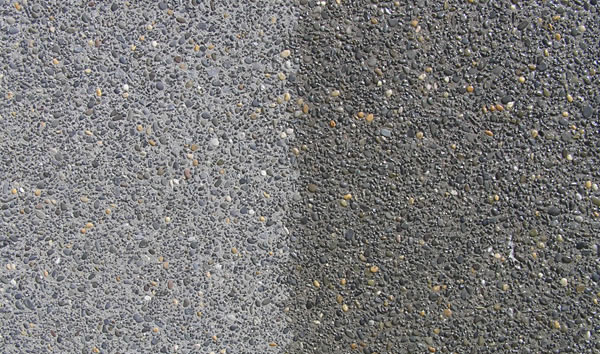
One of the biggest problems faced by any piece of concrete is the effect water will have on it. The most obvious sign is staining. This can result in algae or black spots, and can lead finally to cracks. So the only way of combating this, is by sealing concrete.
If a concrete surface is not treated, and is subject to weathering, it can break up and results in what is know as spalling. This is where the aggregates in the concrete come through and begin breaking back down.
The effect of water on concrete
The effect of water on concrete can be described in two ways. Positive, is from rain fall, and negative is from ground water. Either way, the moisture and vapor will transmit itself through the concrete. Concrete behaves like a sponge with water. The water will always travel through it, seeking the dryer areas, until it reaches the air. Finally the only way of stopping it, is to form a membrane across the surface.
The way water can break down a piece of concrete is not complicated. Basically it undergoes alkali disintegration, which lies dormant, and no longer reacts with the Portland in the cement. As the water hydrates, the alkali begins to react with the cement around it to turn back into a powder, or efflorescence.
When mould takes hold of concrete it can lead to sever health problems for those living near it. Mildew and mould can produce a fungus which releases Myotoxins. These can be deadly if taken inside the body. Sealing concrete is one very good solution.
One of the chemicals used in sealing concrete is Polysiloxane. This is used as curing agents with epoxies to generate flexible, moisture and weather resistant coating.
These can result not only in sealing concrete surfaces, but can make a pathway or drive easier to keep clean.
To see the rental equipment in Milton or Crestview, FL click here
